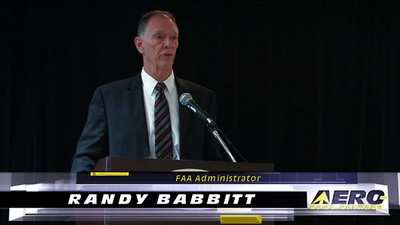Number Of Laser Events Around The Country Continues To
Rise
In a continuing effort to combat the growing problem of lasers
directed at aircraft, the FAA has created a new website to make it
easier for pilots and the public to report laser incidents and
obtain information on the subject, FAA Administrator Randy Babbitt
announced Thursday.
FAA Image

The website collects
a wide array of laser information into one location. It includes
links for reporting laser incidents, laser statistics, FAA press
releases, and FAA research on the dangers lasers can pose to
pilots, as well as downloadable videos. “Safety of the
traveling public is our absolute number-one priority. We will do
everything we can to get the word out about how dangerous it is to
point a laser at an aircraft. These incidents must stop,”
said U.S. Secretary of Transportation Ray LaHood.
“As a former commercial airline pilot, I can tell you that
shining a laser into the cockpit of an aircraft is a serious safety
risk,” Administrator Babbitt said Thursday at a conference on
the dangers of laser events sponsored by the Air Line Pilots
Association (ALPA). “Lasers can distract or temporarily blind
pilots who are trying to fly safely to their destinations and could
compromise the safety of hundreds of passengers.”
Laser event reports have increased steadily since the FAA created a
formal reporting system in 2005 to collect information from pilots.
Reports rose from nearly 300 in 2005 to 1,527 in 2009 and 2,836 in
2010. This year, pilots reported 2,795 laser events through Oct.
20. Pilots have reported the most laser events in 2011 in Phoenix
(96), Philadelphia (95) and Chicago (83).
The FAA began addressing the problem in 2005 by encouraging
pilots to report laser events to the nearest air traffic control
facility and requiring facilities to immediately relay that
information to local law enforcement agencies. In June 2011, the
FAA announced it would start imposing civil penalties of up to
$11,000 against people who interfere with a flight crew by pointing
a laser into the cockpit of an aircraft. The agency is currently
working on 18 civil penalty cases.

The FAA also provided technical expertise to help Myrtle Beach,
S.C. develop a law making it illegal to point lasers at aircraft.
Myrtle Beach adopted its measure in September 2011, joining a
number of other cities and states that now have laws in place
making it illegal to shine lasers at aircraft.
Over the past few years, people have been charged under local,
state and federal criminal statues for pointing lasers at aircraft,
and legislation is pending that would make it a specific federal
crime. The FAA is prepared to work with all law enforcement
agencies to assist with criminal prosecutions.
The increase in annual laser reports is likely due to a number of
factors, including the availability of inexpensive laser devices on
the Internet; increased power levels that enable lasers to reach
aircraft at higher altitudes; more pilot reporting of laser
strikes; and the introduction of green and blue lasers, which are
more easily seen than red lasers.
 ANN's Daily Aero-Linx (05.02.24)
ANN's Daily Aero-Linx (05.02.24) ANN's Daily Aero-Term (05.02.24): Touchdown Zone Lighting
ANN's Daily Aero-Term (05.02.24): Touchdown Zone Lighting Aero-News: Quote of the Day (05.02.24)
Aero-News: Quote of the Day (05.02.24) ANN FAQ: Contributing To Aero-TV
ANN FAQ: Contributing To Aero-TV NTSB Final Report: Cirrus Design Corp SR20
NTSB Final Report: Cirrus Design Corp SR20




